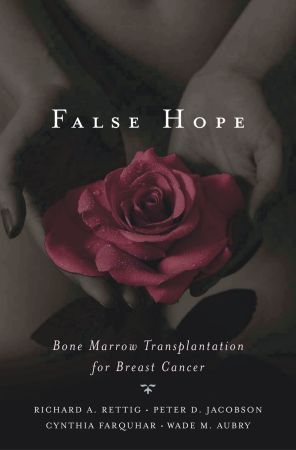(To see other currencies, click on price)
MORE ABOUT THIS BOOK
Main description:
In the late 1980s, a promising new treatment for breast cancer emerged: high-dose chemotherapy with autologous bone marrow transplantation or HDC/ABMT. By the 1990s, it had burst upon the oncology scene and disseminated rapidly before having been carefully evaluated. By the time published studies showed that the procedure was ineffective, more than 30,000 women had received the treatment, shortening their lives and adding to their suffering. This book tells of the
rise and demise of HDC/ABMT for metastatic and early stage breast cancer, and fully explores the story's implications, which go well beyond the immediate procedure, and beyond breast cancer, to how we evaluate other medical procedures, especially life-saving ones.
It details how the factors that drove clinical use - patient demand, physician enthusiasm, media reporting, litigation, economic exploitation, and legislative and administrative mandates - converged to propel the procedure forward despite a lack of proven clinical effectiveness. It also analyses the failure of the technology assessments and randomised clinical trials that evaluated the procedure and the ramifications of this flawed system on healthcare today.
Sections of the book consider the initial conditions surrounding the emergence of the new breast cancer treatment, the drivers of clinical use, and the struggle for evidence-based medicine. A concluding section considers the significance of the story for our healthcare system.
Contents:
PART I: INITIAL CONDITIONS ; PART II: DRIVERS OF CLINICAL USE ; PART III: THE STRUGGLE OF EVIDENCE-BASED MEDICINE ; PART IV: THE SIGNIFICANCE OF THE STORY
PRODUCT DETAILS
Publisher: Oxford University Press (Oxford University Press Inc)
Publication date: March, 2007
Pages: 368
Dimensions: 162.00 x 242.00 x 24.00
Weight: 663g
Availability: Available
Subcategories: General Issues, Oncology, Transplant

